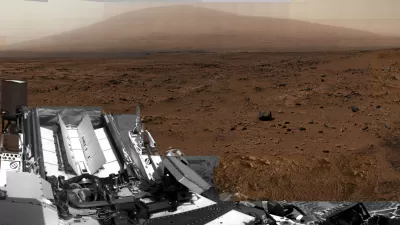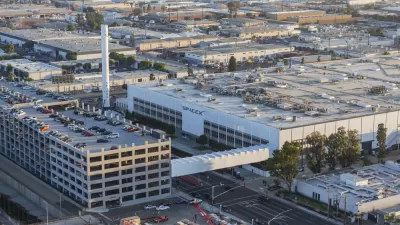The 2020s is the decade of Mars. Last week NASA's Perseverance rover became the sixth American robot to land on the red planet, and the third visitor this month. Where are we going with Mars, who will get us there, and what is the ultimate goal?
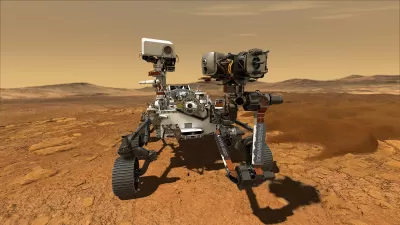
At 3:48 p.m. Eastern time on February 18, 2021, NASA's Perseverance rover touched down on Mars, after traveling nearly 300 million miles in its six-month journey from Earth. The $2.7 billion robotic explorer is the sixth American spacecraft to land safely on the red planet, joining two other spacecraft in orbit from China and United Arab Emirates, which arrived earlier this month. Six more orbiters are currently studying the planet from space, three sent by NASA, one from Europe, and one from India.
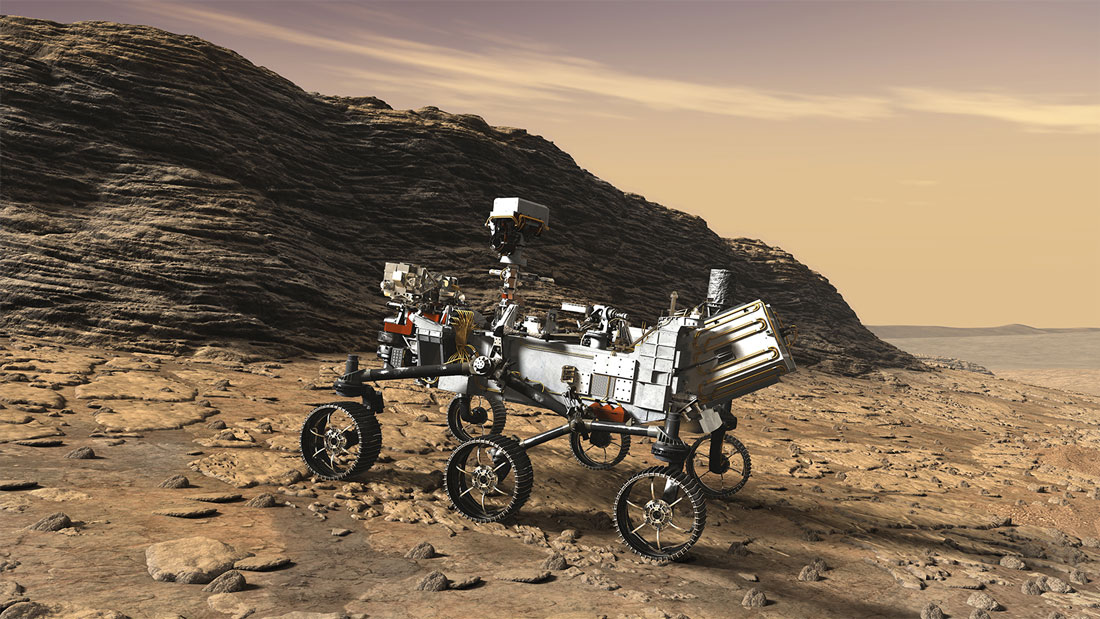
At the Perseverance rover's website you can track its current location in the Jezero Crater, scroll the camera roll, hear sounds, explore the robot in 3D, meet the NASA team, and send your name to Mars. Image: NASA.
The Mission
Noting the mission's importance, NASA Acting Administrator Steve Jurczyk said, "This landing is one of those pivotal moments for NASA, the United States, and space exploration globally -- when we know we are on the cusp of discovery and sharpening our pencils, so to speak, to rewrite the textbooks." President Biden took to twitter, reminding Americans of what happens when we focus and dream big: "Congratulations to NASA and everyone whose hard work made Perseverance's historic landing possible. Today proved once again that with the power of science and American ingenuity, nothing is beyond the realm of possibility."
An elated mission control team let fly an enthusiastic celebration following the rover's seven minutes of terror, referring to Perseverance's final moments of unaided flight due to radio signal lag. This Mars landing was the most difficult ever attempted.
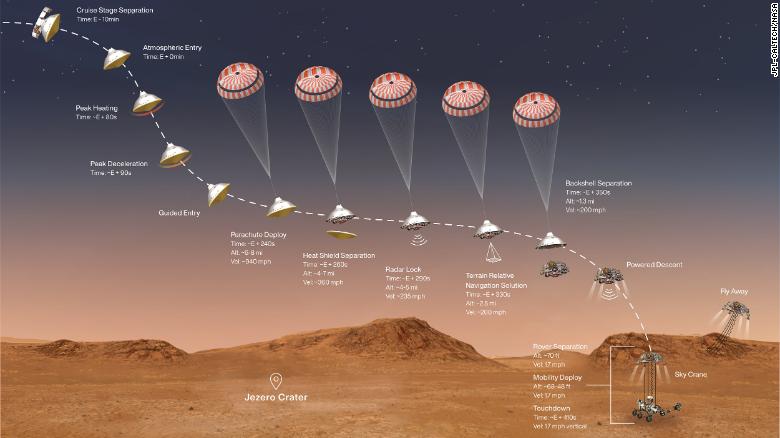
The Perseverance mission is the most ambitious effort in decades to directly study whether there was ever life on the red planet. Perseverance's four-pound helicopter partner, Ingenuity, will also demonstrate powered flight in Mars' thin atmosphere.
The rover will study the Jezero Crater, which scientists believe was once home to an ancient river delta and lake.
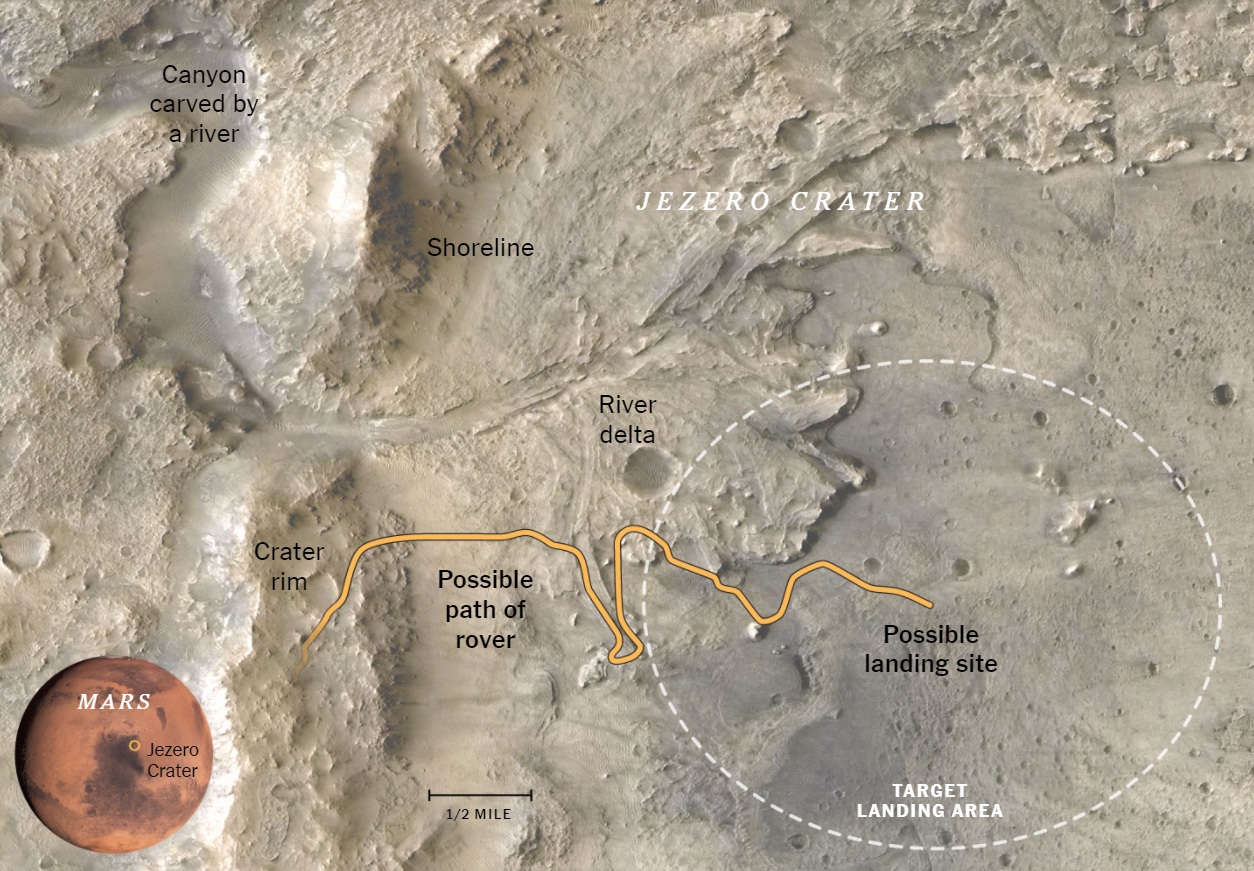
In addition to hunting for signs of past microbial life hidden in the crater, Perseverance will also test how astronauts on future Mars missions could produce oxygen from CO2 in the atmosphere, which could be used for breathing and rocket propellant.
Generation Mars
When could we expect to see humans set foot on Mars? Continued success with Mars exploratory missions demonstrates progress is being made toward putting boots on the ground.
In July 2018, Senator Ted Cruz (R-Texas), Chair of the Subcommittee on Aviation and Space, said in a committee hearing, "Mars is today the focal point of our national space program," Cruz said during opening remarks. "If American boots are to be the first to set foot on the surface, it will define a new generation—generation Mars." In contrast, other committee members held that low-Earth orbit and lunar missions would instead offer more valuable and affordable testing grounds for space technology.
Meanwhile the private sector isn't waiting for government to decide where to go next.
Getting Humans to Mars
The private aerospace manufacturer and space transportation services company SpaceX was founded in 2002 with the goal of reducing space transportation costs to enable the colonization of Mars. SpaceX is working on a next generation of fully reusable launch vehicles that will be the most powerful ever built, capable of carrying humans to Mars and other destinations in the solar system, according to its web site. The company regularly launches cargo to the International Space Station and plans to transport humans there soon.

In addition, SpaceX is currently building an interplanetary spacecraft for Mars known as Starship, capable of bringing over 100 passengers and large amounts of cargo to and from Mars. The space exploration and astronomy news site Space.com reported in 2019 that SpaceX, "Will start off launching commercial satellites as early as 2021, followed by a crewed flight around the moon in 2023. Although SpaceX has not given a timeline for its first missions to Mars, SpaceX founder Elon Musk has said that the first Mars base could be up and running in 2028."
As of this writing SpaceX has completed 112 launches and 74 landings, and has reflown 54 rockets.
Human Settlement on Mars
So what would a Mars base look like, and would this mark the beginning of permanent human settlement on Mars? (Queue the interplanetary urban planning eye candy.)
The Space.com article goes on:
While SpaceX intends to set up a transportation system for humans and cargo traveling to the Red Planet, the company won't be building an entire Mars base on its own. Musk has laid out his vision to create a million-person colony on Mars, but to establish that colony, SpaceX will have to work together with NASA and the agency's international partners and other commercial space companies. Several companies have already begun designing concepts for Mars habitats and have proposed orbital outposts similar to NASA's Lunar Gateway, which could serve as a waypoint for Starship and reduce the amount of fuel needed for return trips to Earth.
The idea of settling Mars has long received interest from public space agencies and private corporations—not to mention film, writing, and art. Musk and SpaceX are confident in spite of major technical and financial considerations involved in getting to—and staying put—on Mars. SpaceX estimates Starship will cost up to $10 Billion to develop, and a Mars base would require air-tight habitats to shield the atmosphere’s toxic air and deadly radiation.
Bold plans from private companies like SpaceX and AI Spacefactory have led some observers to question the need for agencies like NASA, but the assessment from a November 2020 Planetary Society article is that the two entities actually do very different things and rely on one another for success.
Perhaps not unlike the way human settlements on earth depend on the successful interaction of the public and private sector.
Civilization Building, Planetary Transformation: So Many Questions
Beyond the massive logistics and risks, pioneering talk of Mars quickly leads to ethical and legal questions, and the issue of occupying a planet that cannot advocate for itself, at least in a way we understand. For example, SpaceX has suggested the possibility of terra-forming Mars, manipulating the planet’s atmosphere so that it is more suitable for human occupation, which could potentially involve the detonation of nuclear weapons.
Not surprisingly, there are divergent views from experts and lay people on whether Mars can be settled, and whether it should —below is a sample of opinions orbiting the debate.
- Can We Colonize Mars? (Allison Eck, PBS - Nova Next, March 16, 2018)
- This Is How Many People You'd Need to Colonize Mars, According to Science (Evan Gough, Science Alert - Universe Today, July 2, 2020)
- Colonizing Mars? Here’s the Technology We Need to Make That Happen (David Von Drehle, Genetic Literacy Project - Washington Post, January 19, 2021)
- Here’s What Experts Say Are the Main Issues We’ll Face in Colonizing Mars (Jasper McEvoy, USC Annenburg Media, March 8, 2019)
- Scientists Draw Up Plan to Colonize Mars (Amber Jorgenson, Astronomy.com, September 12, 2018)
- Mars Colonization: Beyond Getting There (Igor Levchenko, Shuyan Xu, Stéphane Mazouffre, Michael Keidar, Kateryna Bazaka, Wiley Online Library, October 25, 2018)
- Will Humans Start Colonizing Mars in Ten Years? (Jeremy Hsu, Institute of Electrical and Electronics Engineers, October 15, 2014)
- Colonizing Mars May Require Humanity to Tweak its DNA (Mike Wall, Space.com, May 19, 2020)
- Humans Will Never Colonize Mars (George Dvorsky, Gizmodo, July 30, 2019)
- On a Planet Where You Cannot Breathe, Is Living on Mars the Best Idea? (Antonia Jaramillo, USA Today - Florida Today, December 30, 2020)
- Why Humans Colonizing Mars Is a Good Idea (FP Studio, FirstPost.com, November 16, 2018)
- All the Reasons Why Humans Shouldn’t Colonize Mars, According to Experts (Brad Jones, Futurism.com, November 18, 2018)
- Sorry Elon Musk, But It’s Now Clear That Colonising Mars Is Unlikely – and a Bad Idea (Andrew Coates, The Conversation - University College London, August 2, 2018)
- No, Mars Is Not a Free Planet, No Matter What SpaceX Says (Antonino Salmeri, SpaceNews.com, December 5, 2020)
- The Case Against Mars Colonisation (Zahaan Bharmal, The Guardian, August 28, 2018)
Leading a Way Forward
At what point does humanity need to stop and address these questions before pushing forward? And what would be the forum for resolving these issues as a policy matter? Has the train already left the station, er, launch pad?
The time to think critically about Mars may be sooner than we think, as some see the 2020s marking a new era of red planet exploration. One group has already devoted itself to thinking through permanent settlement of Mars. Calling itself Mars One, the organization’s web site invites enthusiasm and engagement for Mars:
Humans settling on Mars will inspire us all to make Earth a better place. Technology, scientific understanding, cooperation – is there anything we cannot achieve? The Mars One Foundation will help solve components of Mars permanence: crew selection and training, and technology for local resource use and to grow food. We are a global initiative focused on the greatest adventure of our time. We are going to Mars. Join us!
To its credit, Mars One has developed a thoughtful FAQ addressing logistical and ethical considerations around the settlement of Mars. And the web site supports a blog and an online community "for everyone who supports the human mission to Mars."
No word yet on a public hearing for Martian articles of incorporation.

Trump Administration Could Effectively End Housing Voucher Program
Federal officials are eyeing major cuts to the Section 8 program that helps millions of low-income households pay rent.

Planetizen Federal Action Tracker
A weekly monitor of how Trump’s orders and actions are impacting planners and planning in America.

The 120 Year Old Tiny Home Villages That Sheltered San Francisco’s Earthquake Refugees
More than a century ago, San Francisco mobilized to house thousands of residents displaced by the 1906 earthquake. Could their strategy offer a model for the present?

HSR Reaches Key Settlement in Northern California City
The state’s high-speed rail authority reached an agreement with Millbrae, a key city on the train’s proposed route to San Francisco.

Washington State Legislature Passes Parking Reform Bill
A bill that would limit parking requirements for new developments is headed to the governor’s desk.

Missouri Law Would Ban Protections for Housing Voucher Users
A state law seeks to overturn source-of-income discrimination bans passed by several Missouri cities.
Urban Design for Planners 1: Software Tools
This six-course series explores essential urban design concepts using open source software and equips planners with the tools they need to participate fully in the urban design process.
Planning for Universal Design
Learn the tools for implementing Universal Design in planning regulations.
Ada County Highway District
Clanton & Associates, Inc.
Jessamine County Fiscal Court
Institute for Housing and Urban Development Studies (IHS)
City of Grandview
Harvard GSD Executive Education
Toledo-Lucas County Plan Commissions
Salt Lake City
NYU Wagner Graduate School of Public Service




























